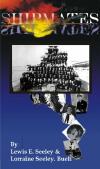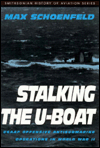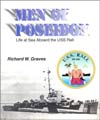Shipmates
A Personal Journal Aboard a World War II Destroyer
Seeley, Lewis E. & Lorraine Seeley Buell
2000, Magicimage Filmbooks
ISBN 1882127021
Paperback, 260 pages
| Type. | Personal Account/Memoir |
| Pros. | Well-written, interesting and moving account of experiences on destroyer in wartime and of its sinking |
| Cons. | Some historical inaccuracies; see below for specific examples |
| Rating. |  |
 The destroyer USS Rowan (DD405) was hit by a torpedo from a German E-boat in the Mediterranean on 11 September, 1943, and sank in 40 seconds, taking 204 men with her. This book is the memoir of one of the survivors, written in collaboration with his daughter more than 40 years after the event.
The destroyer USS Rowan (DD405) was hit by a torpedo from a German E-boat in the Mediterranean on 11 September, 1943, and sank in 40 seconds, taking 204 men with her. This book is the memoir of one of the survivors, written in collaboration with his daughter more than 40 years after the event.
One of the more remarkable aspects of this story is the series of occurrences, both coincidences and deliberate actions, which led to the author and his brother joining the same ship, striking for the same rating, but being separated unexpectedly on the night of the sinking. Originally assigned to the Enterprise, Seeley gave up this more glamorous opportunity, switching with another sailor in order to stay with his younger brother. Another chance happening resulted in Seeley being transferred from his assigned below-deck action station to an above-deck station the day before the fatal torpedo struck. He replaced a man who had made the mistake of passing the wrong kind of ammunition; that man lost his life to his error, and the author gained his survival, while his brother went down with the ship.
USS Rowan was active in many areas of the globe from the time of the author's embarkation in December 1940 until her sinking less than three years later. Her wartime actions ranged from the North Atlantic (where she rescued survivors from the Coimbra, sunk by Hardegen in U-123; San Jacinto, sunk by Schnee in U-201; and Steelmaker, sunk by Forster in U-654); escort duty in the infamous convoy PQ-17 and in convoy UGS-6; and assistance in Operation Torch and Operation Husky.
This is a personal account, not a history, and while the authors appear to have done an excellent job of collecting survivor stories in order to present an accurate and colorful account of life aboard and of the sinking, some historical details regarding specific operations, convoys, and U-boats are incorrect. For example, convoy UGS-6 is referred to as USG-6; and the U-boat kill claimed by Rowan on 22 April, 1942 is not documented in any source. Some wartime propaganda elements are stated here as fact: there are repeated references to Germans (both E-boat and U-boat) strafing survivors of sunken ships as a matter of course, and there is a curious reference to a strategy supposedly used by the U-boats beginning in 1942:
"In April, however, wolfpack warfare entered a new phase. The German High Command instructed U-boat captains to surface and, courteously and apologetically, to inform the passengers and crew of the target vessel that they were about to be sunk. Victims were given ample time to radio their exact location before abandoning ship. This was no humanitarian gesture. The U-boats would torpedo the hapless vessel and then lay in wait for rescuers[…] With luck, they could pick off two or more ships just by being patient." (page 115). On the next page, the authors state that the U-boat that had sunk the San Jacinto was "setting a trap for would-be rescuers, using the survivors as bait." However the situation may have seemed to individuals on the spot, U-boats did not in fact deliberately operate according to such a "strategy".
The real strength of this book is in its personal element. Like many war veterans, Seeley had successfully buried his feelings of survivor guilt for four decades, but when retirement left him with time on his hands he was no longer able to suppress these memories. In order to exorcise the nightmares he was suffering, he began to examine his memories, so long locked away. His candor is courageous and his account of his experience of the sinking and its aftermath are extremely moving. Adding further depth to the book are character vignettes of his comrades aboard, and descriptions of rescuing survivors and visits to foreign lands. His personality comes through so clearly and strongly (the book is written in the first person although his daughter did the actual writing) that by the end of the book you feel you have gotten to know Seeley. Thus it is a disappointment to learn, from the postscript of the second edition, that Seeley died in 1999.
This book was submitted to uboat.net for review purposes.
Review written by Tonya Allen.
Published on 5 Oct 2001.
Purchase information: (info) Get Shipmates now at amazon.com ($ 19.95)
Get Shipmates now at amazon.com ($ 19.95) Get Shipmates now at amazon.co.uk
Get Shipmates now at amazon.co.uk
Return to our main review page.



